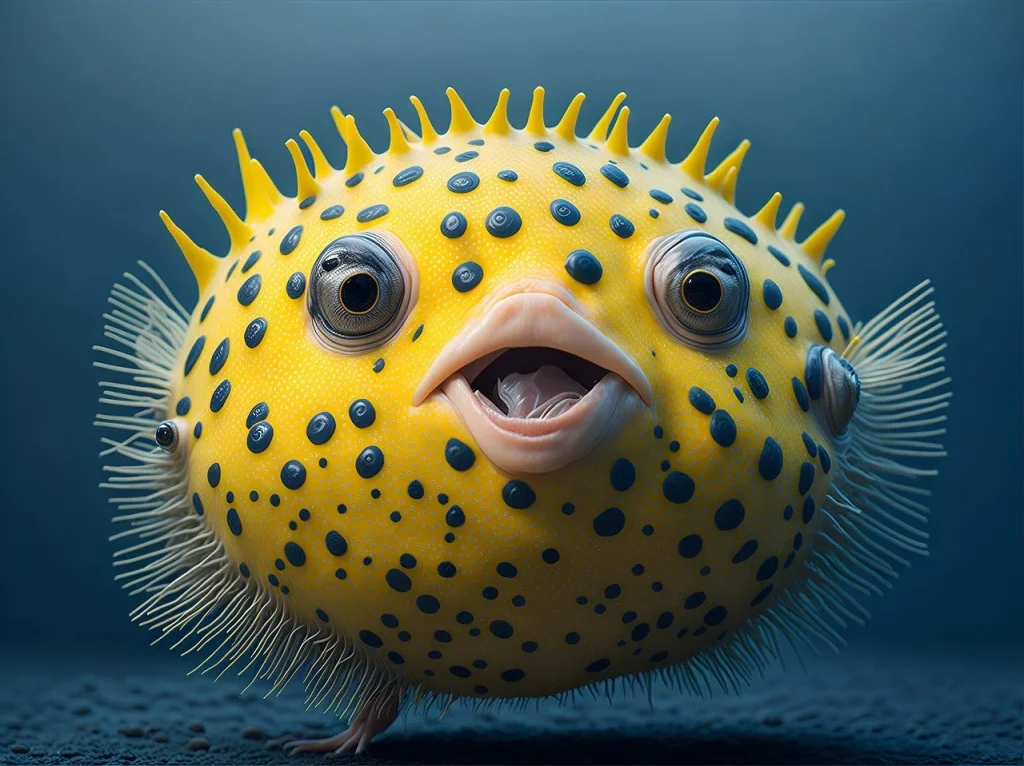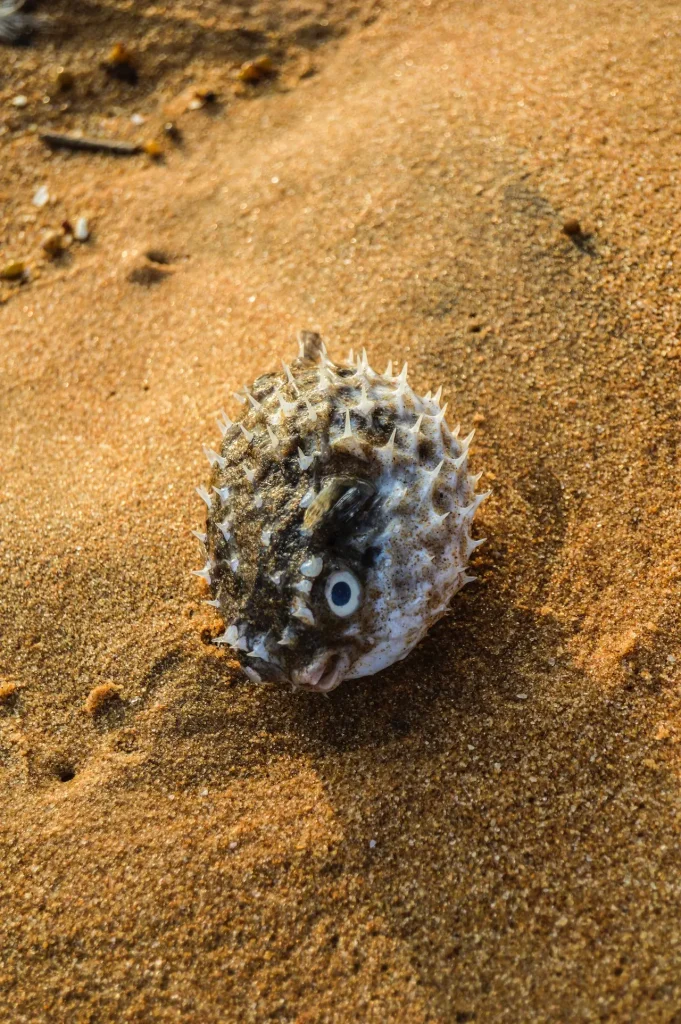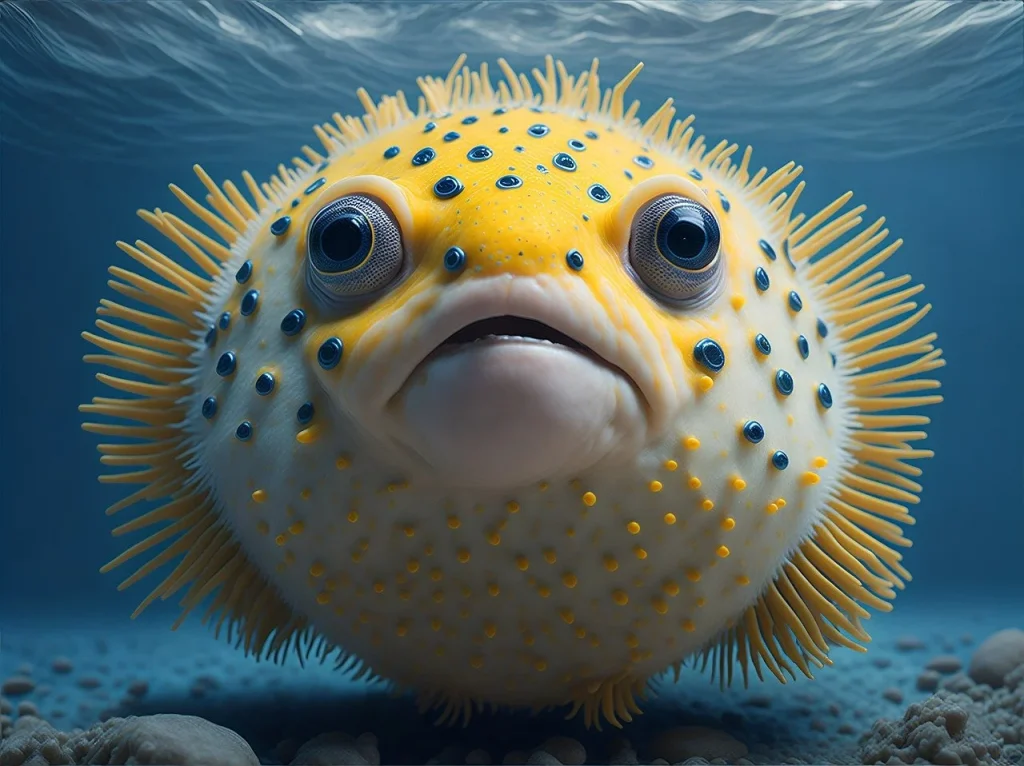Hey there, angler buddies! Today, we’re diving into a topic that’s been the subject of many a fishing tale and online debate: Are Florida puffer fish poisonous to touch? I mean, we’ve all seen these cute, balloon-like fish either in the water or on the end of our lines, but what’s the real deal when it comes to touching them? Let’s get our hands dirty (figuratively, of course) and find out!
The Burning Question: Are Florida Puffer Fish Poisonous to Touch?
Alright, let’s cut to the chase. Are Florida puffer fish poisonous to touch? The short answer is: It’s complicated. While you’re unlikely to drop dead from a casual touch, there are some precautions you should take. Intrigued? Let’s dive deeper.
The Toxic Truth: What Science Says
Alright, let’s get down to the nitty-gritty, the science behind the question that’s been bugging us all: Are Florida puffer fish poisonous to touch? Now, I’m no marine biologist, but I’ve done my homework, and here’s what the experts have to say.

The Toxin: Tetrodotoxin Unveiled
First off, let’s talk about the toxin itself. It’s called tetrodotoxin, and this stuff is no joke. It’s a potent neurotoxin that’s up to 1,200 times more toxic than cyanide! Yeah, you read that right. This toxin blocks sodium channels in nerves, leading to paralysis and, in extreme cases, death. But before you swear off touching any fish ever again, let’s delve a bit deeper.
Where is the Toxin Located?
The toxin is primarily found in the fish’s internal organs like the liver and ovaries, and sometimes in the skin. However, it’s generally not present on the outer surface of the fish where you’d touch it.
- Skin Contact: While the skin can contain toxins, the concentration is usually not high enough to pose a risk through casual skin contact. But, and it’s a big but, if you have an open wound on your hand, it’s a different story. Always better to err on the side of caution.
- Internal Organs: These are the danger zones. The internal organs contain the highest concentration of tetrodotoxin. So if you’re cleaning a puffer fish (which I wouldn’t recommend unless you’re trained), never touch these parts with your bare hands.

The Variability Factor: Not All Puffers are Created Equal
Here’s where it gets even more interesting. Not all puffer fish have the same level of toxicity. Even within the same species, the toxin levels can vary based on factors like diet and environmental conditions. So, one puffer might be more toxic than its buddy caught from the same waters.
The Final Verdict
So, circling back to our burning question, are Florida puffer fish poisonous to touch? According to science, the risk from simply touching the outer surface of a puffer fish is minimal. However, given the potential variability and the extreme toxicity of the substance we’re dealing with, it’s always best to exercise caution. Use tools, wear gloves, and whatever you do, stay away from those internal organs!
How to Handle with Care: The Safe Way to Touch
So, you’ve caught a puffer fish, and it’s staring up at you with those big, adorable eyes. Now what? You’re probably wondering how to handle this squishy, spiky, and potentially toxic creature without turning your fishing trip into a medical emergency. Well, you’re in luck, because I’ve got the lowdown on how to handle a puffer fish with the care and respect it deserves.
View this post on Instagram
The Golden Rule: No Bare Hands, Please!
First things first, let’s reiterate the golden rule: Never handle a puffer fish with your bare hands. Even if science tells us that the risk of toxicity from skin contact is low, why take the chance?
- Use Tools: Fishing pliers or grippers are your best friends here. They allow you to handle the fish without direct contact, minimizing any risk to you and reducing stress for the fish.
- Gloves for Extra Caution: If you want to be extra cautious, you can wear a pair of fishing gloves. Just make sure they’re not so bulky that you end up dropping the fish back into the water prematurely!
Quick and Gentle Does It
If you’re planning to release the puffer fish back into its watery home (which is usually the best course of action), make sure you do it gently.
- Smooth Release: Lower the fish back into the water using your tools, allowing it to swim away on its own terms. A gentle release minimizes stress and increases the fish’s chances of survival.
- Revival Time: If the fish seems a bit stunned or disoriented, especially if it puffed up, hold it upright in the water for a few seconds. This helps it regain its bearings and swim off more effectively.
So there you have it, the safe and respectful way to handle a puffer fish if you happen to catch one during your Florida fishing adventures. Remember, these creatures are more than just a cute face; they’re a fascinating part of Florida’s marine ecosystem. Handle with care, and you’ll have a fish tale that’s not just about the one that got away, but the one you handled like a pro!
The Myth of Puffing Up: Does It Make Them More Poisonous?
Ah, the age-old myth! You’ve probably heard it before: a puffed-up puffer fish is more toxic than one that’s deflated. It’s a tale as old as time—or at least as old as fishing tales go. But is there any truth to it? Let’s deflate this myth once and for all.

The Puffing Mechanism: A Defense, Not a Danger Signal
First off, let’s talk about why puffer fish puff up in the first place. It’s a defense mechanism, pure and simple. When a puffer fish feels threatened, it inflates its body to make itself look bigger and less appetizing to predators. It’s like saying, “Hey, look at me, I’m big and spiky, and you don’t want to mess with me!” But here’s the kicker: puffing up doesn’t make the fish any more toxic than it already is.
The Science Behind the Myth
The toxin in puffer fish, tetrodotoxin, is found in specific parts of the fish like the internal organs and sometimes the skin. The act of puffing up doesn’t magically produce more toxin or redistribute it. The toxic parts remain toxic, and the non-toxic parts stay the same.
- Consistent Toxicity: Whether the fish is puffed up or not, the levels of toxicity remain consistent. So, a puffed-up puffer isn’t any more dangerous than its deflated counterpart.
- No Chemical Change: The puffing is a physical change, not a chemical one. The fish takes in water or air to inflate itself, but this doesn’t alter its chemical makeup or toxicity levels.

The Bottom Line: Don’t Believe the Hype
So, to put the myth to bed: No, a puffed-up puffer fish is not more poisonous than a deflated one. The puffing is all about defense and has nothing to do with toxicity levels. Now that we’ve got that cleared up, you can focus on the real issues, like how to handle these fascinating creatures safely if you ever catch one.
There you have it, myth busted! Now you can impress your fishing buddies with your puffer fish knowledge the next time you’re out on the water.
Final Thoughts: To Touch or Not to Touch?
So, to answer the question, are Florida puffer fish poisonous to touch, the general consensus is that they’re not highly toxic to the touch, but caution should still be exercised. Always use tools to handle them and avoid touching their internal organs.
So there you have it, folks! The next time you encounter a puffer fish while enjoying some Florida puffer touch fishing, you’ll know exactly what to do and what to avoid.

